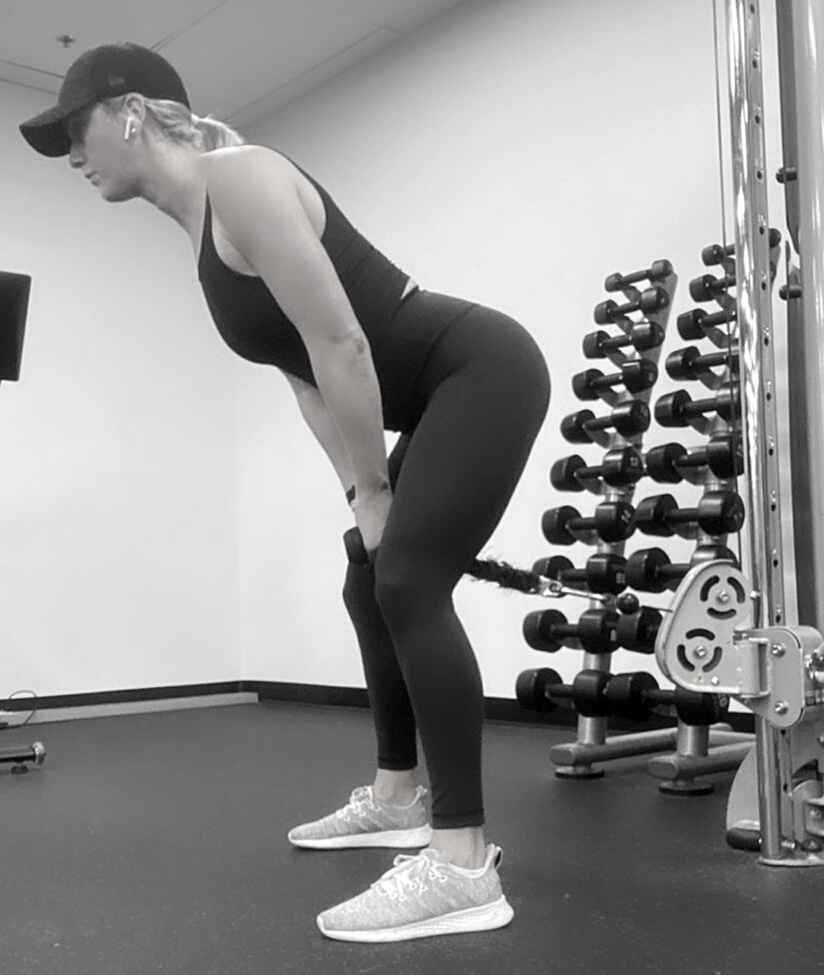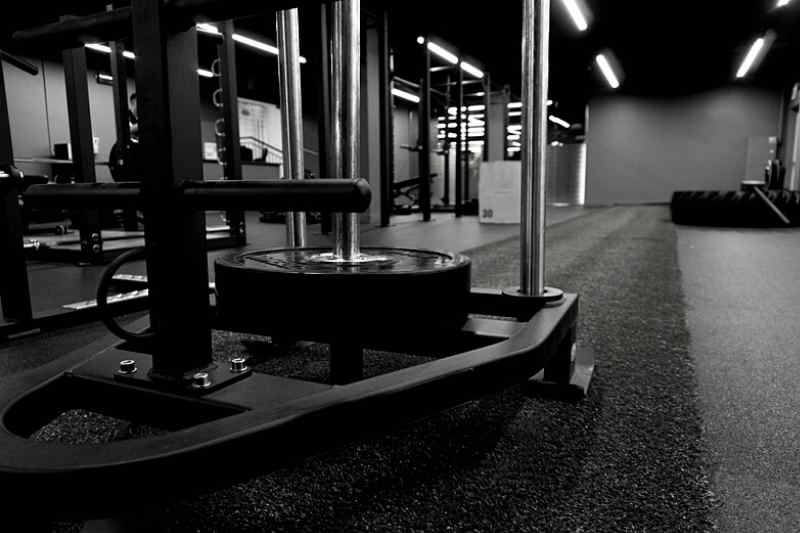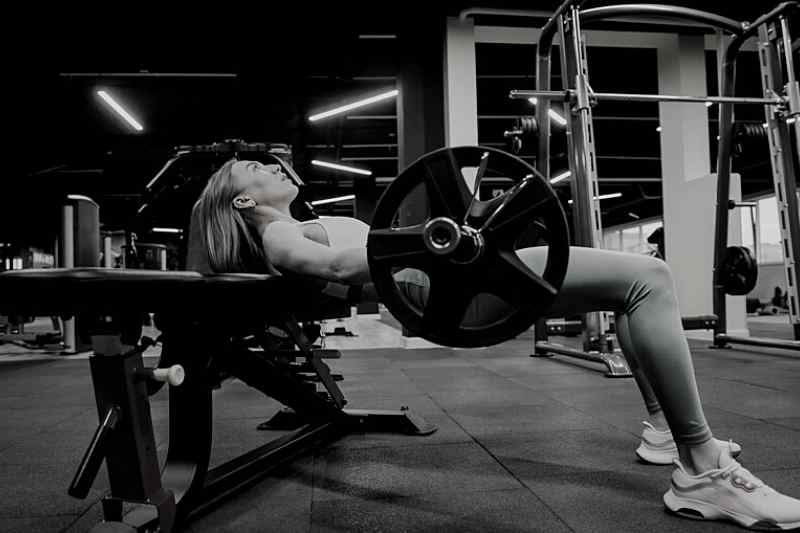Cable pull-throughs are an awesome way to work your posterior chain and especially the glutes. But we don’t always have access to a cable machine. Here are the best cable pull-through alternatives for both home and the local gym.

Cable pull-throughs are one of the best cable machine leg exercises you can do.
Not only do they target your glutes specifically, but they also work your hamstrings and reduce lower back engagement.
The cable pull-through exercise is safe, easy for even gym newbies to master, and serves as the perfect “finisher” to help you close out your workout like a beast.
But what if you don’t have a cable machine at your gym, or your home gym setup is just too small to fit a cable machine?
Don’t worry: there are lots of excellent alternatives to consider!
Things to Look for in a Cable Pull-Through Alternative
Before we dive into the cable pull-through alternatives, I want to take a moment to focus on what factors to look for when considering exercises to do instead of cable pull-throughs.
More specifically, how you can get a truly next-level workout even without a cable machine.
? Factor #1: Glute and Hamstring Focus
Cable pull-throughs are highly focused on the glutes and hamstrings, the two posterior chain muscles that work with your lower back to support and move your legs.
They’re critical—and sadly, often undertrained—muscles that play a huge role in your mobility and agility.
Any alternative should be equally focused on strengthening the glutes and hamstrings so as to encourage greater lower body strength.
? Factor #2: Reduced Lower Back Engagement
One of the things that makes the cable pull-through one of the all-time best glute exercises is the fact that it works your glutes (and hamstrings) with minimal lower back engagement.
You maintain a neutral spine throughout the entire movement, and thus remove your spinal muscles largely from the equation.

There are a lot of glute-focused exercises you can do that involve a load on your lower back, but these run a much higher risk of causing injury, and are less safe for those who are recovering from lower back injury or surgery.
A suitable cable pull-through alternative will involve minimal lower back engagement as well!
? Factor #3: Increased Hip Movement
In order to keep your lower back from doing the work, cable pull-throughs involve a hinging backwards of the hips.
Moving through your hips allows you to bend without engaging your lower back, and facilitates better hip mobility by strengthening the hip flexors and extensors.
Any glute-focused exercise that also encourages greater hip mobility will be an absolute “win” as an alternative to cable pull-throughs.
Ready to dive in and find out which exercises are the best choice for you if you don’t have a cable machine?
Let’s go!
The Best Alternatives for Cable Pull-Throughs
⭐ Cable Pull-Through Alternative #1: Resistance Band Pull-Throughs
Just because you don’t have a cable machine, that doesn’t mean you can’t do a “pull-through” type movement!
The resistance band pull-through works your body in the exact same way as the cable pull-through, but replaces the bulky, oversized cable machine with compact, ultra-portable resistance bands.
Because of this one slight variation, it becomes an exercise you can do quite literally anywhere, making it an excellent option for doing cable pull-throughs at home or on the road.
To perform this exercise:
- Secure resistance bands to a pillar, post, or anything solid enough to serve as an anchor. Make sure they are anchored at ankle height.
- Turn to face away from the anchor point, grip the bands between your legs, and walk forward until the bands are stretched tight enough provide resistance.
- Adopt the proper stance: feet spread beyond shoulder width apart, toes pointed slightly outward, lower back straight, head up, and arms soft.
- Hinge backward at the hips, allowing your knees to bend slightly, and bend forward until your torso is parallel to the floor.
- Drive your hips forward and contract your glutes as you stand upright.
- Finish off the movement with a forward thrust of your hips to maximize glute contract.
- Pause for a 1-count, then repeat.
⭐ Cable Pull-Through Alternative #2: Sled Pull-Through
Now we’re getting creative!
With a sled, you can A) load up enough weight that it can serve as an anchor point for your resistance bands, or B) actually drag the sled forward every time you straighten.
I’m definitely in favor of option #B because it encourages greater hip mobility and more functional strength.
You’ll find it’s a great option for building glute and hamstring power while also working your calves and feet muscles.
To perform this exercise:
- Load up a weight sled with the desired weight. Secure a long cable (6-10 feet) or TRX bands to the sled.
- Turn to face away from the sled, grab the handle between your legs, and move forward until the cable/band is at full extension.
- Hinge forward at the hips and lower until your torso is parallel to the floor. At the same time, take a small step forward to increase tension on the cable.
- Drive your hips forward and contract your glutes as you stand upright. Keep your arms loose and let your glutes and hamstrings do all the work of pulling the sled forward as you stand.
- Finish off the movement with a forward thrust of your hips to maximize glute contract.
- Pause for a 1-count, then repeat.
⭐ Cable Pull-Through Alternative #3: Sled Forward Drag
If you’ve got a sled, you can do some amazing lower body work with it! Load in up, secure the handle in place, and get to pulling.
With this exercise, you’ll feel the burn in your glutes and hamstrings, as well as your quads.

You see, when you step forward, your legs have to drive into the floor to drag the sled behind you. This legs to some serious engagement of the glutes and hamstrings along with your calves.
Sadly, there’s less hip hinging than you’d like, but there is plenty of engagement of the hip extensor muscles.
It’s also much gentler on your lower back than you might realize.
To perform this exercise:
- Load up a weight sled with the desired weight. Secure a long cable (6-10 feet) or TRX bands to the sled.
- Turn to face away from the sled, grab the handle behind your back, and move forward until the cable/band is at full extension.
- Brace your abs and lean forward into the pulling motion. Drive your forefeet into the floor and walk forward, dragging the heavy sled behind you.
TIP:
To make this even more difficult, connect the sled weight to your waist using a dip belt or belt squat belt, and perform this exercise in bear crawl position.
⭐ Cable Pull-Through Alternative #4: Kettlebell Swings
Kettlebell swings are as close as you can get to pull-throughs without actually doing a pull-through.
If you examine the way you move through the exercise closely, you’ll see that it involves the same hip hinging, the same forward thrust of the glutes, and the same hamstring engagement.
The fact that it also incorporates other muscles—including your quads in the squat and your upper back, shoulders, and arms in the swing—makes it an excellent alternative to training your entire body at once.
A lot of the same muscles worked in the kettlebell swing replicate the muscles worked in the cable pull-through.
Trainer’s Note:
Think of kettlebell swings as a “starter move” to do at the beginning of your workout, and other, more glute-focused variations—like resistance band or sled pull-throughs—as the ideal “finisher” to end your workout with.
To perform this exercise:
- Stand with your feet spread slightly beyond shoulder width apart, with your toes pointed slightly outward.
- Place a kettlebell on the floor between your feet. Grip it in both hands, lowering into a squat position.
- Inhale as you lift the weight off the floor and swing it gently backward between your legs.
- Exhale as you swing the weight forward using the power of your glutes and hamstrings. As you swing, straighten your legs to a standing position.
- Stop your swing either at chest height (Russian KB swing) or overhead (American KB swing).
- Inhale as you begin to descend. Control the downward swing of the weight, hinge backwards at your hips to keep your back straight, and lower once more into a squat as the kettlebell swings between your legs.
- Repeat as desired.
More Kettlebell Resources:
- 8 Best Kettlebells for Home Gyms
- What Size Kettlebell Should I Buy?
- 6 Best Kettlebell Exercises for Beginners (Plus Sample Workout)
⭐ Cable Pull-Through Alternative #5: Barbell Hip Thrusts
Barbell hip thrusts are an amazing exercise to help you target your glutes and hamstrings by placing a load directly on your lap.

There is more lower back engagement than with cable pull-throughs, and you’ll have to pay close attention to your form in order to keep the focus on the glutes and hamstrings instead of your lower back.
See also: What Muscles Does the Barbell Hip Thrust Work?
However, once you master the form, you’ll find it’s an amazing cable pull-through alternative to help you shred your glutes and hammies.
To perform this exercise:
- Sit on the floor with a weighted barbell across your lap, with a hip thrust pad between the bar and your hips, and your back against a weight bench.
- Bend your knees, place your feet flat on the floor, and rest your upper back and shoulders against the bench.
- Contract your glutes and thrust your hips upward into the air to form a “tabletop” position, with your knees bent at a 90-degree angle and your back as straight as possible.
- Hold for a 1-count, really squeezing those glutes, then slowly lower under control.
- Stop just before your butt touches the ground, pause for a 1-count, then thrust upward once more.
- Repeat as desired.
More Hip Thrust Resources:
- 5 Hip Thrust Variations for Maximum Glute Strength
- Hip Thrust vs. Glute Bridge: Pros, Cons, and Differences
- 5 Best Hip Thrust Machines and Glute Drives
⭐ Cable Pull-Through Alternative #6: Stiff-Legged Deadlift
Last, but certainly not least, we’ve got the stiff-legged deadlift, a deadlift variation that places most of the emphasis on your hamstrings and glutes, with far less lower back engagement than the standard deadlift.
I want to be clear: you are still deadlifting, which means you’re putting your lower back at risk if A) you lift too heavy, and B) you haven’t mastered the form.
Deadlifts account for a significant percentage of weightlifting-related lower back injuries, so it’s not one to incorporate into your workout lightly.
But, if you can master the form on the stiff-legged deadlift, you’ll find it does an amazing job of developing those powerful hamstrings and glutes you want.
To perform this exercise:
- Load up a barbell with your desired weight. Set it on the floor at your feet.
- Adopt the stance: spread your legs roughly shoulder width apart, point your toes slightly outward, and keep your spine in a neutral position.
- Hinge backward at the hips and bend down to grip the weight. Keep your knees as stiff as possible (WITHOUT locking out!) as you bend.
- Contract your glutes and hamstrings as you hinge forward at the hips and stand up straight. Avoid using your arms, shoulders, or upper back to pull, but keep the focus on your glutes, hamstrings, and lower back.
- Remain in an upright position for a 1-count, then hinge backward at the hips (but keep your legs straight) as you lower under control to touch the weight lightly to the ground..
- Repeat as desired.
Cable Pull-Through Alternatives — FAQs
Can you do cable pull-throughs without a cable machine?
As you saw above, you can use a weight sled or resistance bands to perform cable pull-throughs even if you don’t have a cable machine.
Resistance bands are the most home gym-friendly alternative, but a weight sled can help to encourage greater mobility and functional strength if you have one at your local gym.
How often should I train glutes with cable pull alternatives?
Your glutes need a MINIMUM of 48 hours of rest between intense training sessions (up to 72 hours if you’re working with high loads/volumes).
Incorporate these cable pull-through alternatives into your Leg Day routines no more than 2-3 times per week.
As always, make sure that you warm-up your glutes properly before engaging in resistance training and throw in some glute stretches after your workout to increase range of motion and reduce tightness.
The Bottom Line
Your glutes and hamstrings play a critical role in every movement of your lower body—running, jumping, squatting, lunging, sitting, standing, and more.
Training them specifically will help to maximize your lower body strength and “bulletproof” your knees against injuries.
Exercises like the cable pull-through and the various alternatives I shared above will help you to pay extra attention to these posterior chain muscles and strengthen them (along with your lower back and calves, which support the glutes and hamstrings).
Incorporate them into your Leg Day routines, and you’ve got the recipe for greater power, increased mobility, and greater fitness overall!
? Shout out to Genevieve Jarun, NASM-CPT, for being the demo model for these exercises. Give her a follow on Instagram, where she posts workouts and exercise tips.
More Guides and Articles Like This
5 Best Stretches for Tight Glutes (Plus Benefits and How to Do Them). Stretching your tight glutes reduces muscle stiffness, increases range of motion, and can even help you build more muscle. Here are my five favorite glute stretches for unlocking the muscles around your rear end.
How to Do the Cable Pull-Through Like a Champ. In this guide to the cable pull-through exercise, we’ll look at why you should use this exercise, step-by-step instructions for engaging the right muscles, and common mistakes people make when doing cable pull-throughs. Next stop, Glutetown!